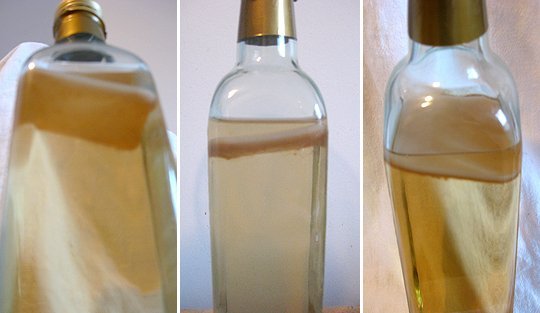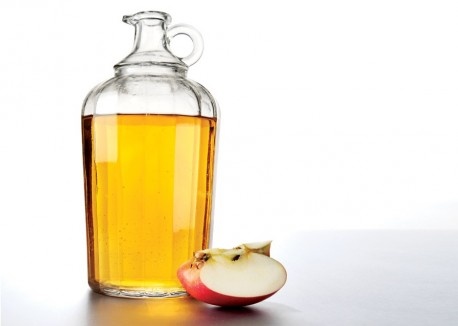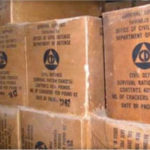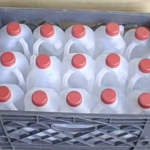Vinegar is an essential item to have on hand for cleaning, dietary and medicinal purposes. However, store-bought products are not always the best option to consider. You can make your own by following a couple of basic recipes in order to give yourself access to potent and healthy supplies. All you need are a few ingredients and some patience, and putting everything together is a lot easier than you may think.
Apple Vinegar
Making vinegar straight from apples is the easiest and most nutritious method, but it requires a few weeks to a month in order to produce the finished product. You can either use pieces of peeled, seeded and cored apples from a mixture of different varieties, or you can simply chop up a few red apples into chunks as well. The difference is in the taste of the finished product, so you should experiment with different variations until you find the best one for your needs and preferences. For this example, we will use regular, unprocessed chopped apples.
Take six large apples and cut them into pieces, dividing them equally into mason jars. Make sure that the jars are no more than ¾ full in order to allow the product to expand during the fermenting process. Add purified water and fill to the top of the apples. You can also boil water and allow it to cool before adding as well. Add a tablespoon of sugar to each jar, or two if using a large jar and stir. Place a coffee filter or cheesecloth over the top and secure with a rubber band.
Store the jars in a warm place away from bright light for about two weeks. Start checking the jars at the two week mark for some bubbles and foam that will appear on the surface. Once this occurs, pour the contents through a wire strainer and then through a finer strainer to separate the apples and larger particles. Cover with a new coffee filter and allow the jars to sit for another couple of weeks. You are waiting for the liquid to turn cloudy and a little murky. You should stop the fermentation process once the liquid has reached a potency and flavor that you like. Simply remove the filter and rubber band and replace with a canning lid and store.
You can speed up the fermentation process by adding 1 ½ tablespoons of pure apple cider vinegar to every two cups of water in the beginning. You can also replace sugar with honey or eliminate the sweetener altogether.
Alcohol-Based Vinegar
You can also create what is known as a wine vinegar which consists of an alcohol, apple cider or fermented fruit juice base. You want a little bit of alcohol to start the fermentation process, but you don’t want to use any added sugar or products that contain artificial sweeteners. You can also add something called the “mother of vinegar”, which is a starting culture that can be used to speed up the fermentation process.
In both cases, add 1 ½ cups of the starter liquid to 2 cups of wine and 1 cup of water. Place in dark wine bottles or a ceramic jug with a spigot on the bottom. Cover with cheesecloth or a coffee filter and secure with a rubber band. Store in a warm and dark place for anywhere between one to three months. The product will be ready for processing once a slimy head starts to form near the top of the liquid. Pour the contents of the bottles or jug through a fine strainer and place in wine bottles or mason jars and seal.
You can experiment with different juice, alcohol or wine combinations to adjust the taste as well as fermentation time required to produce the finished product. In both cases, you will have a healthy and useful source of vinegar that can keep for long periods of time. You can also keep the slimy, frothy substance on the tops of the vinegar as starting material for the next batch and speed up future fermentation processes.

















